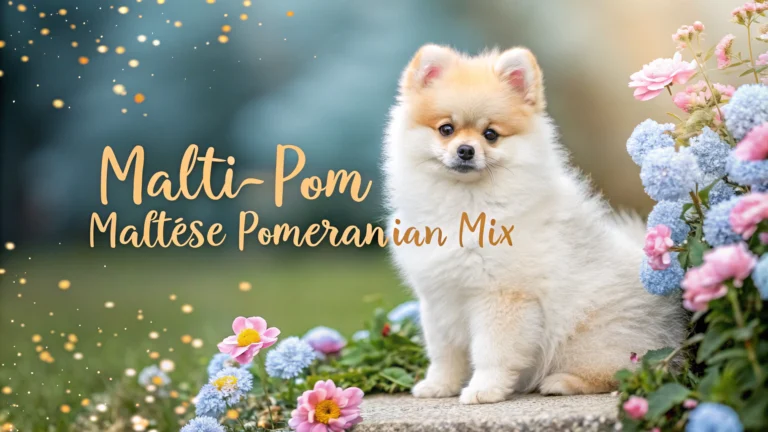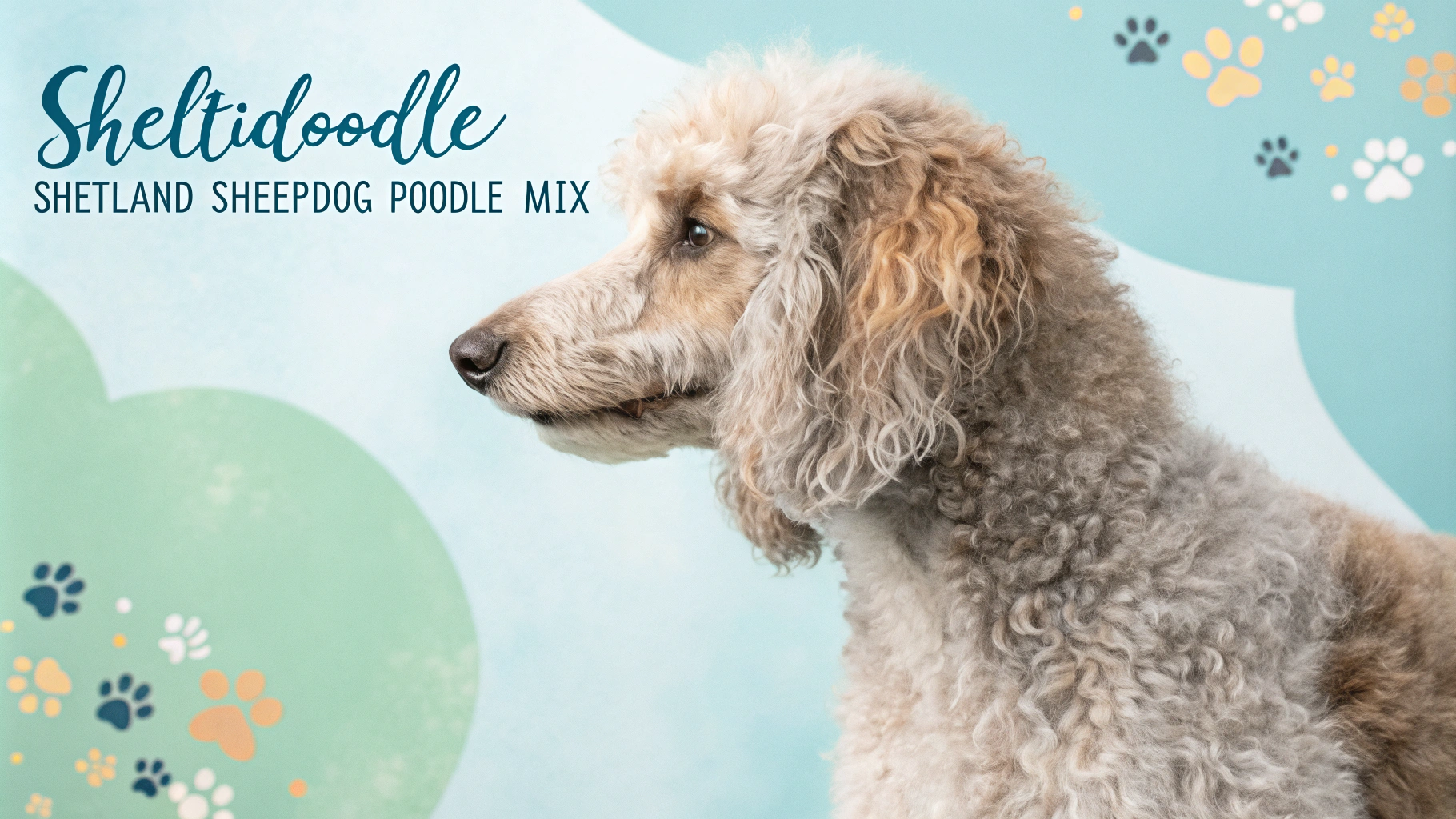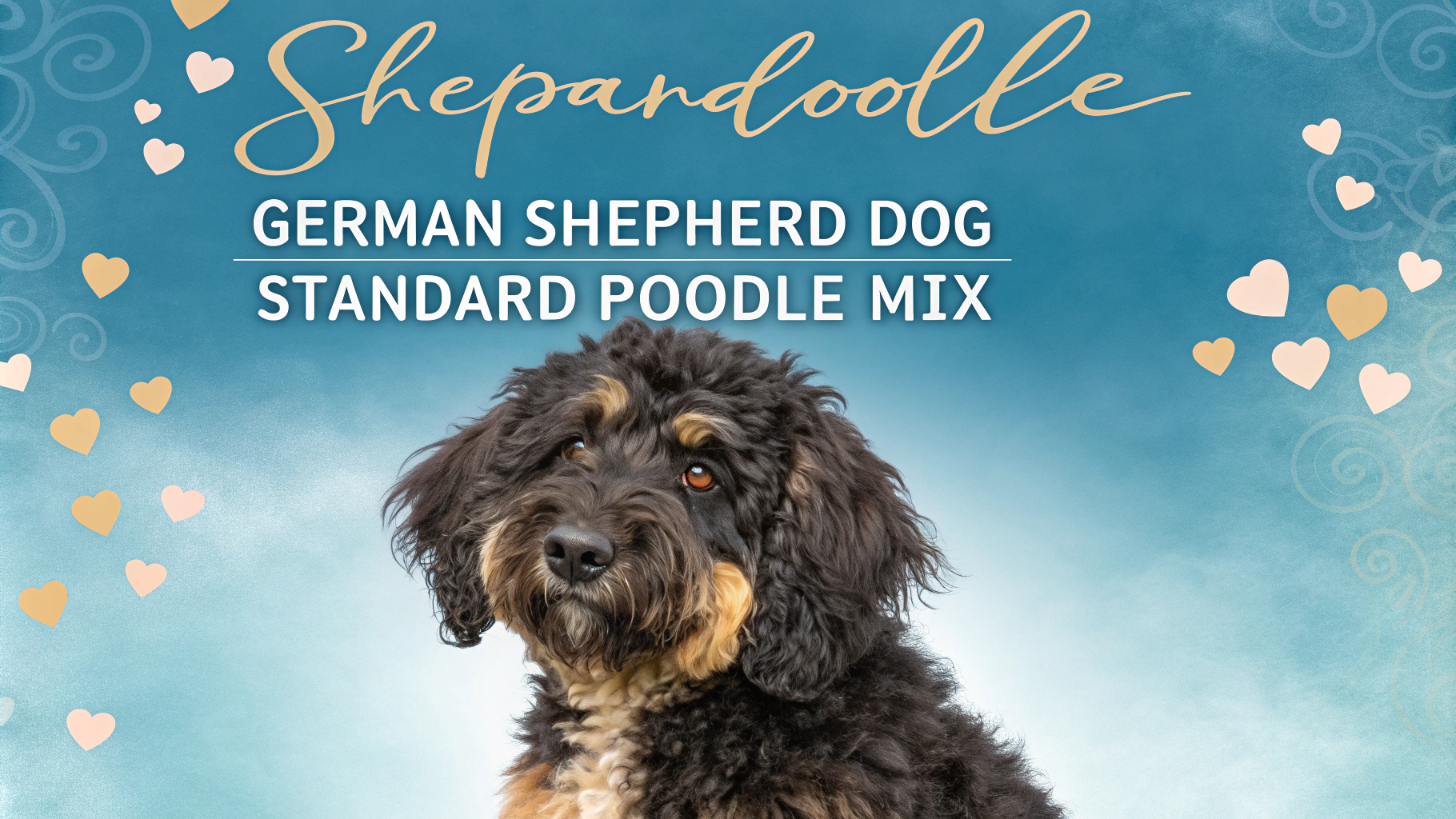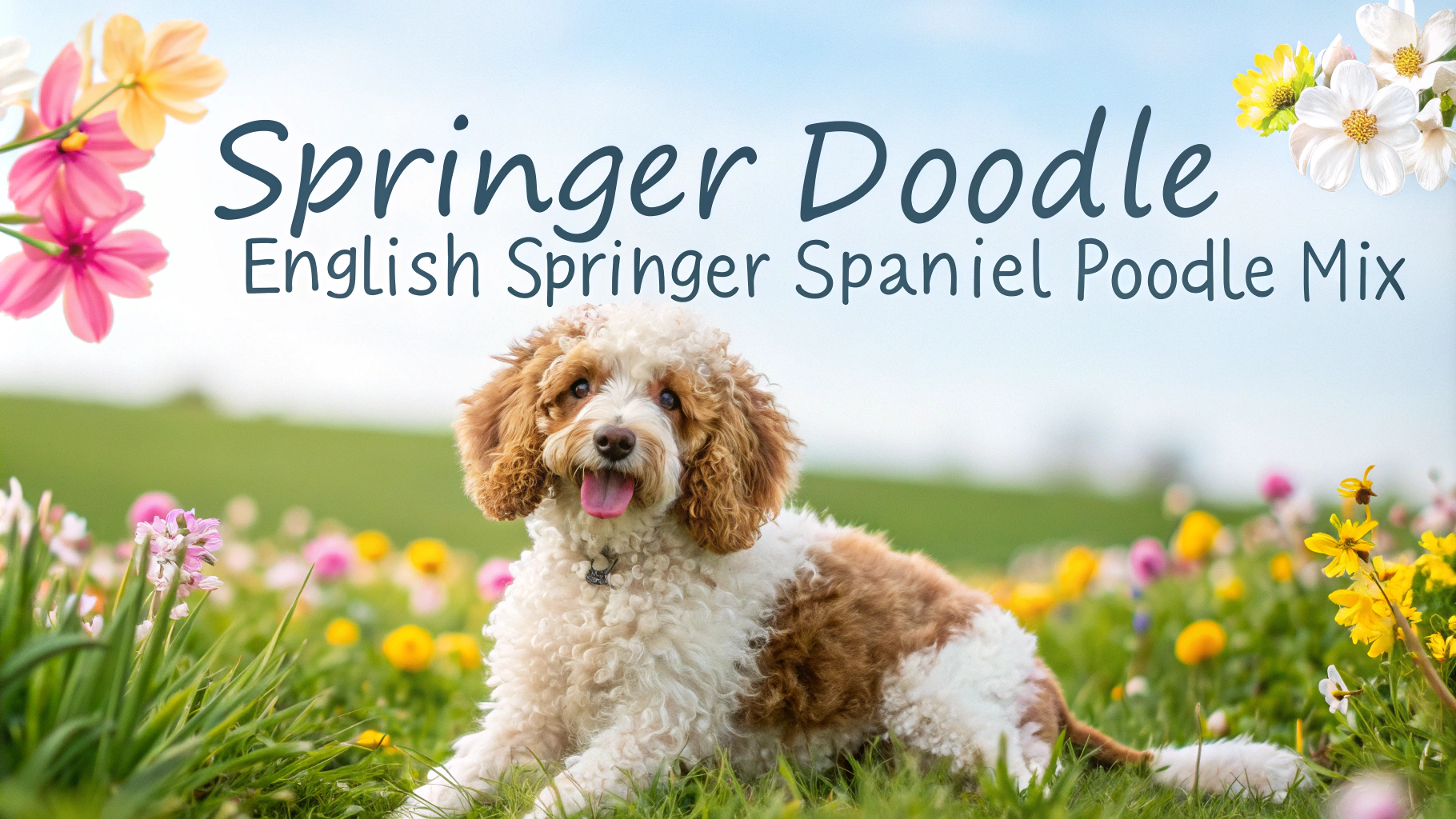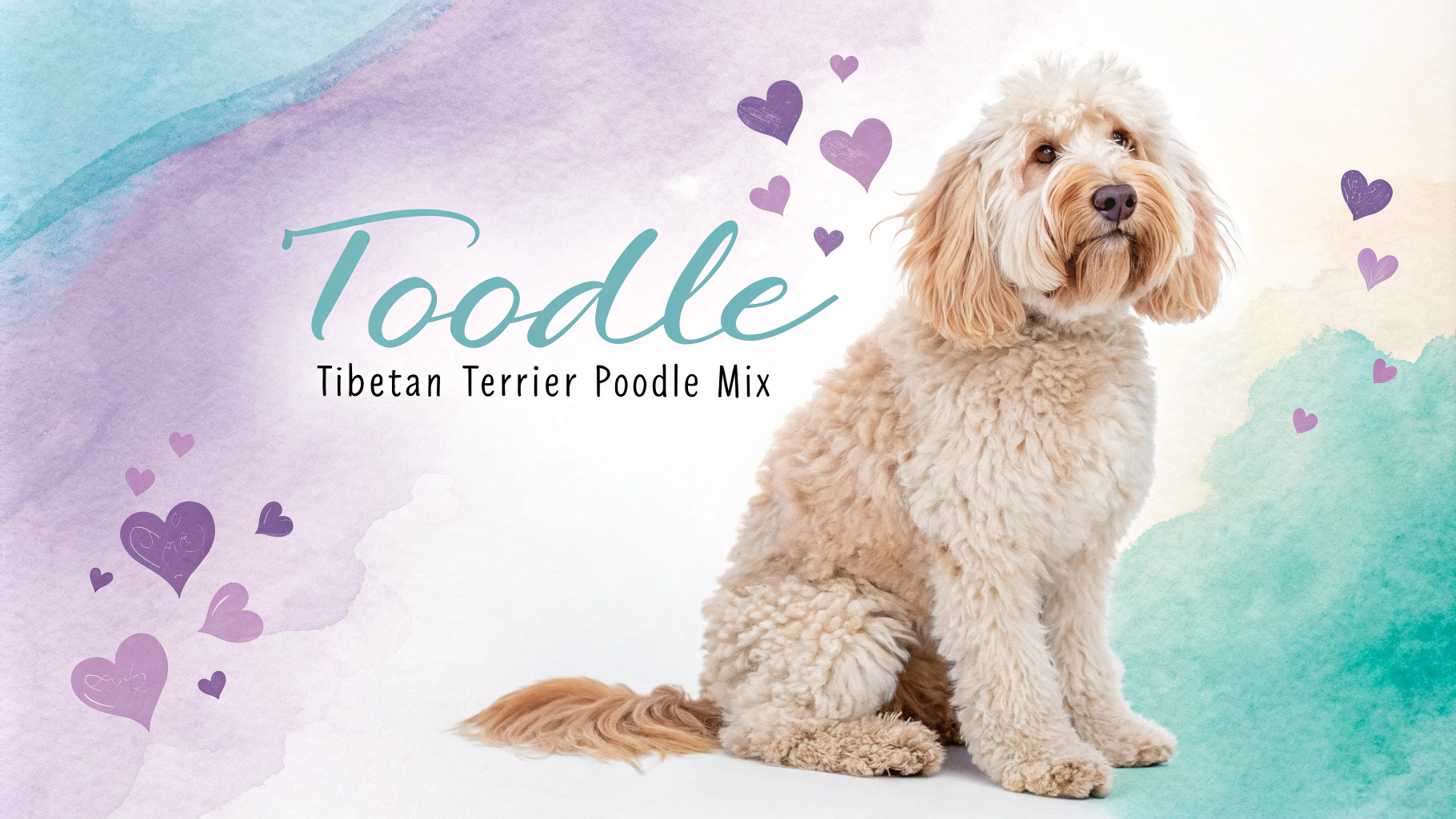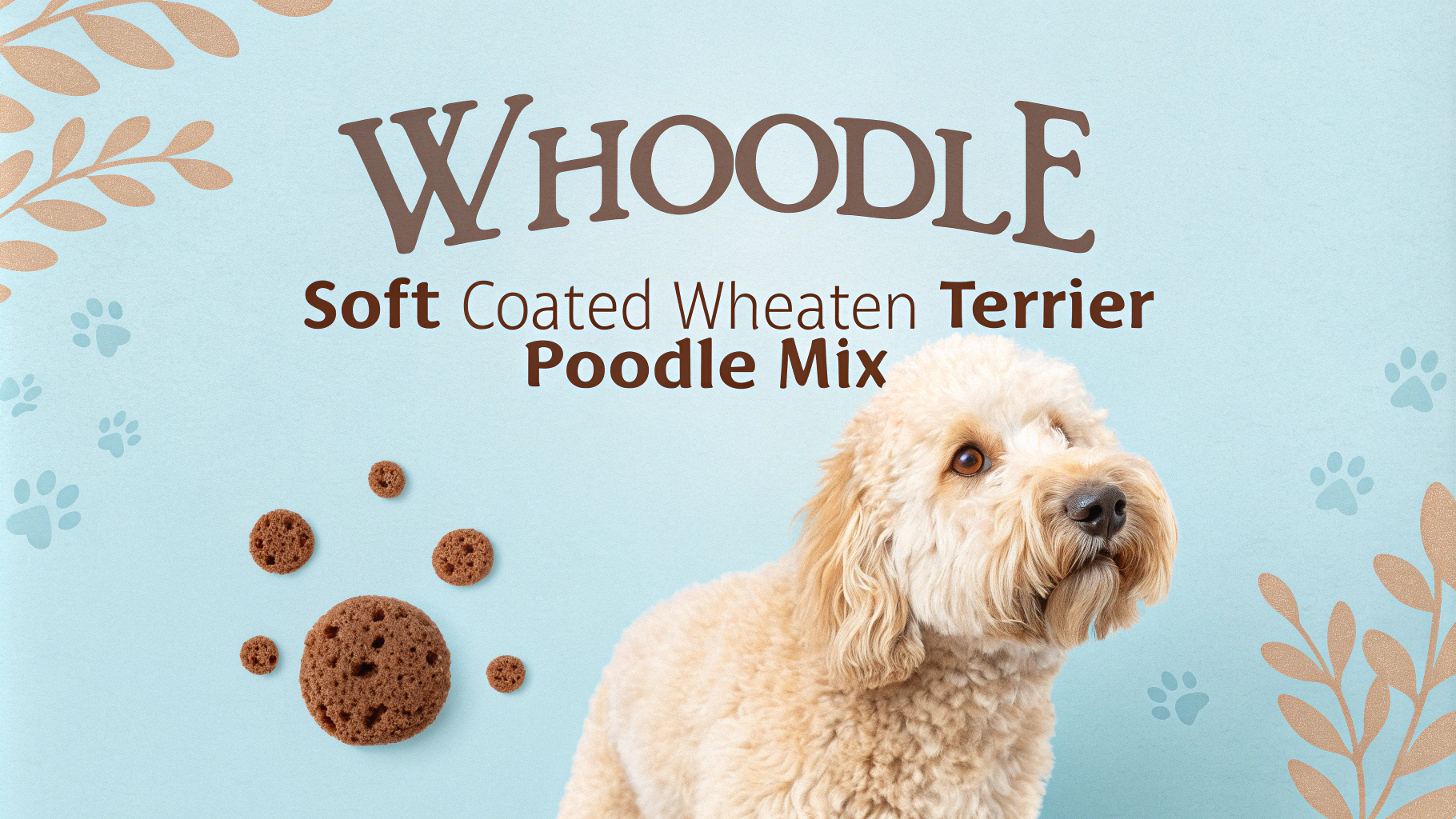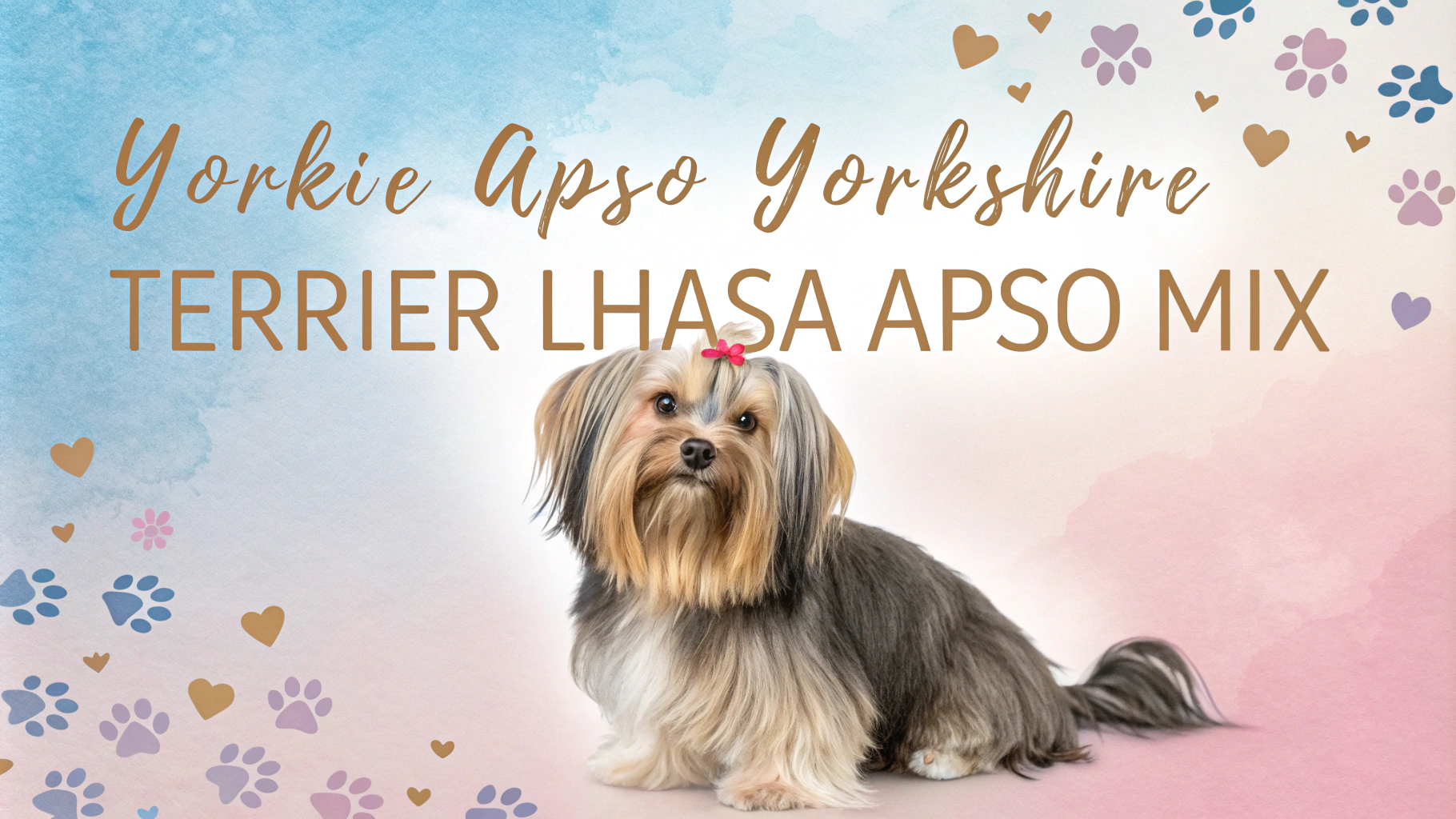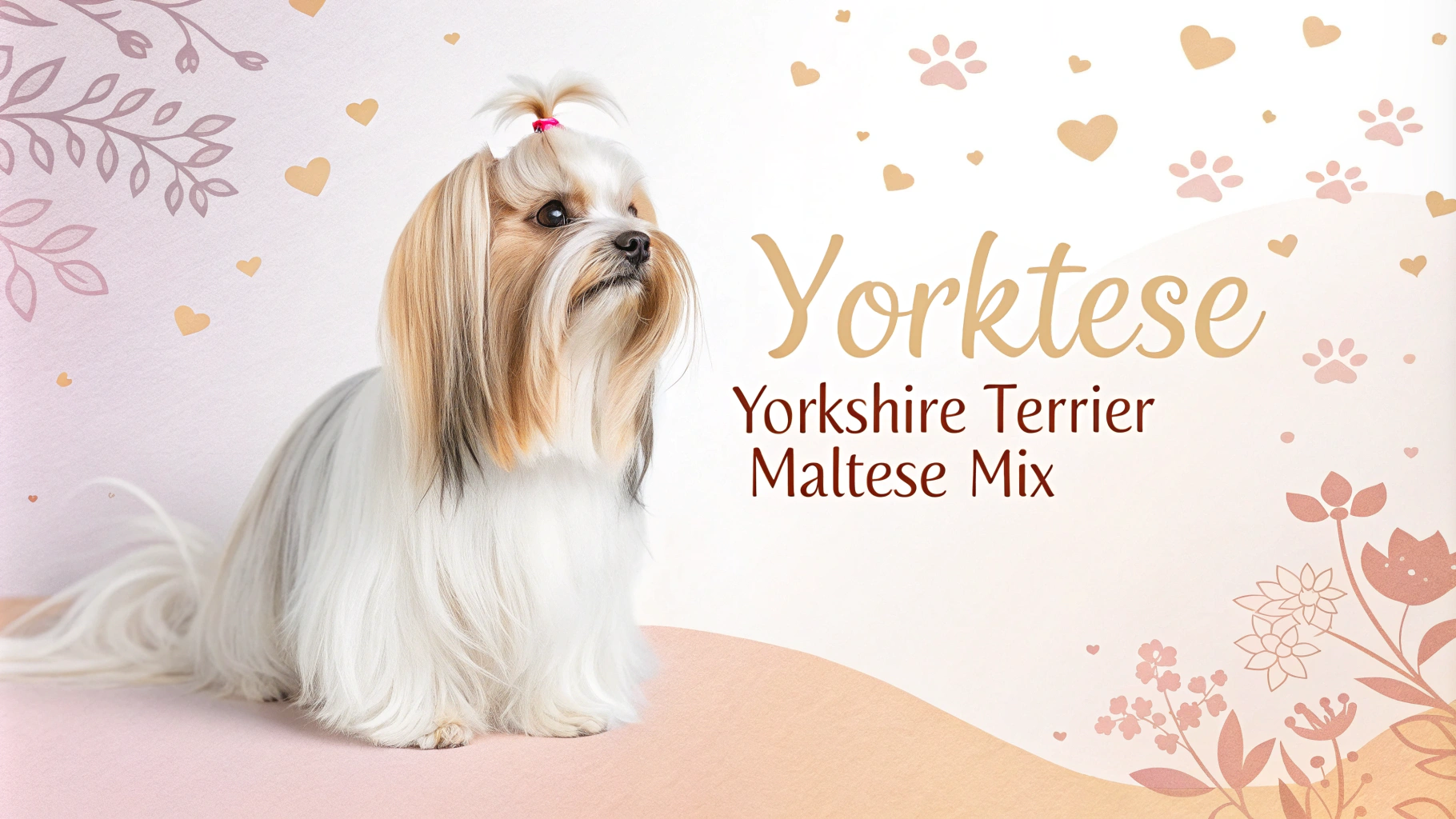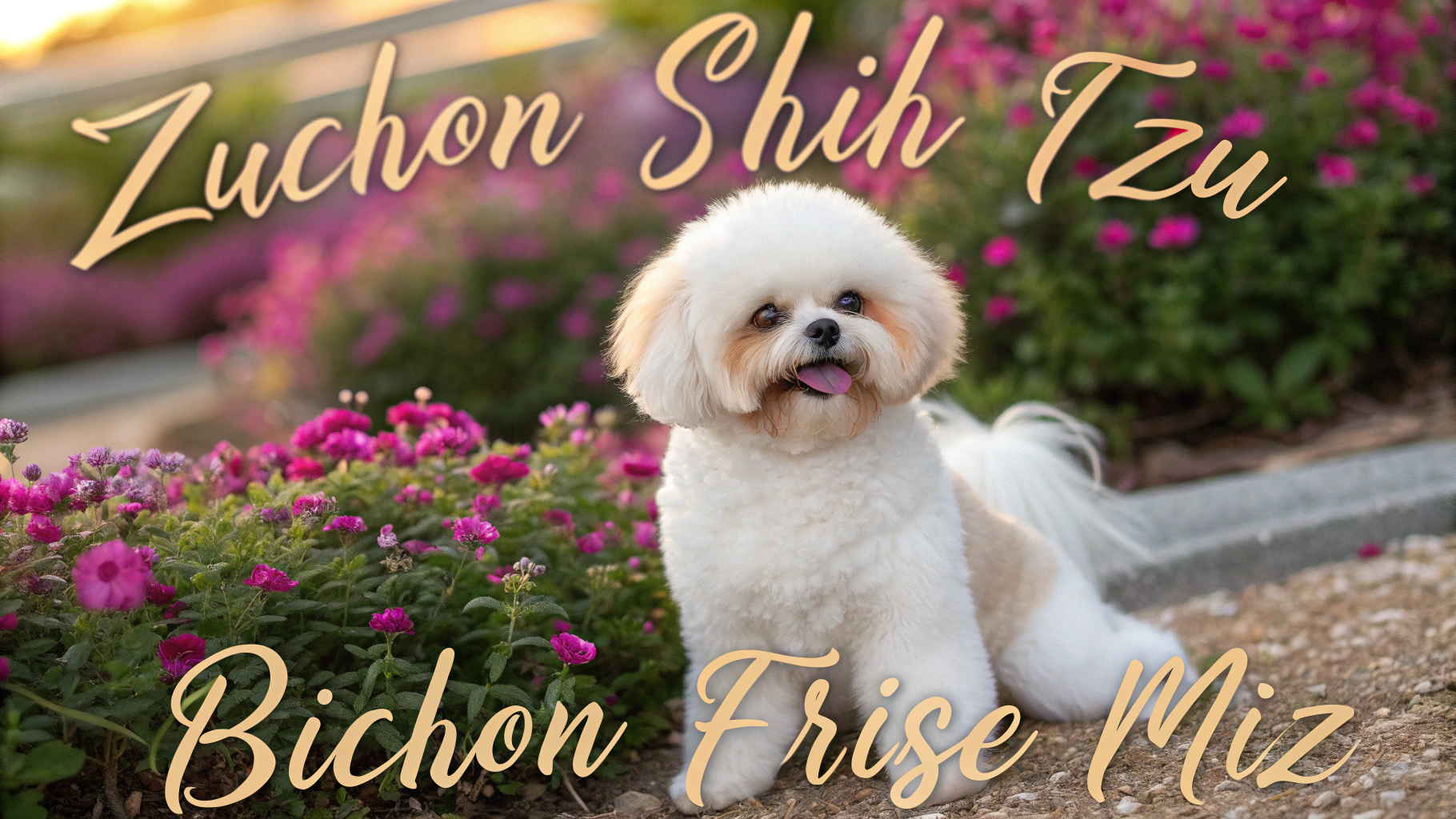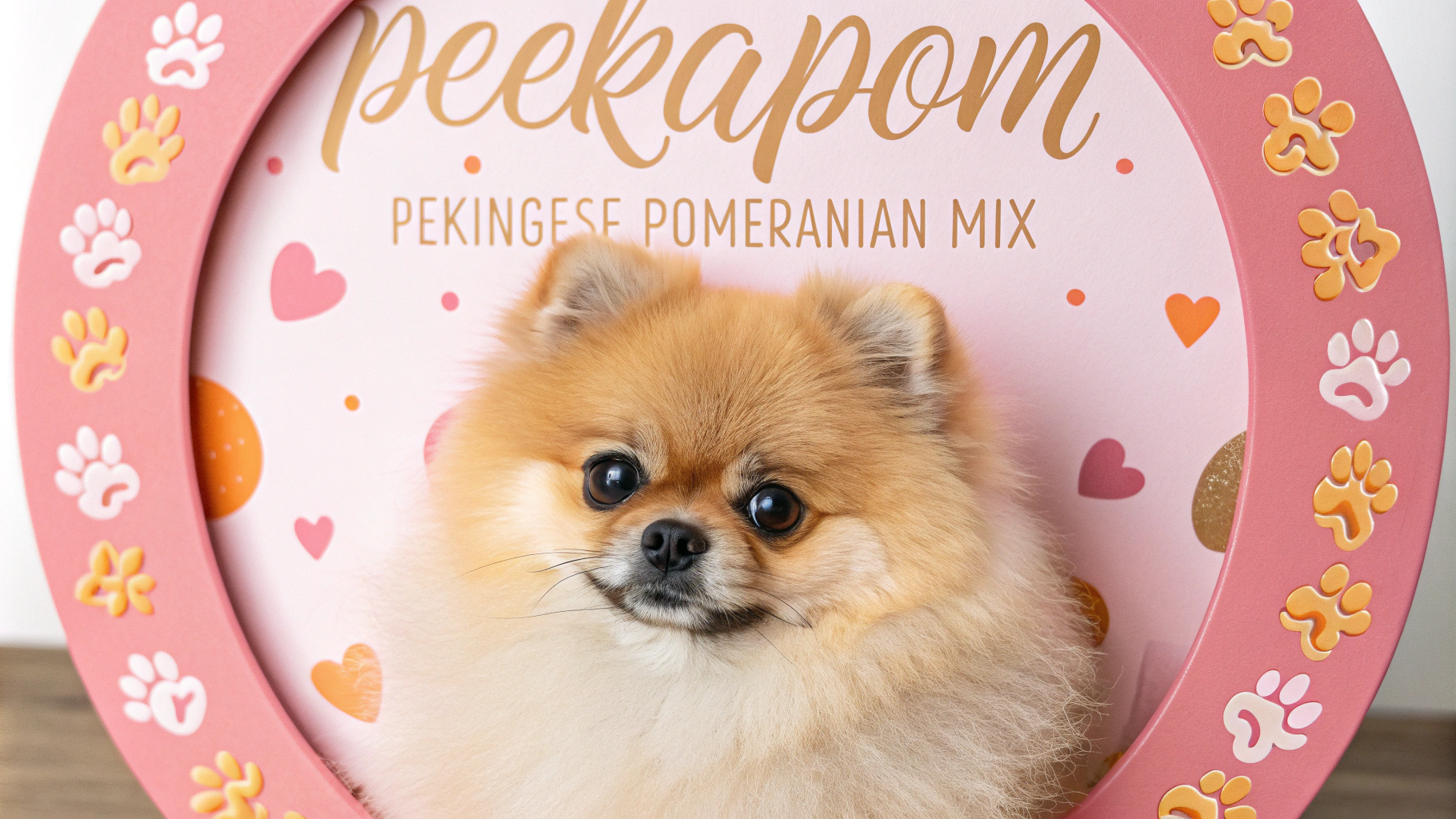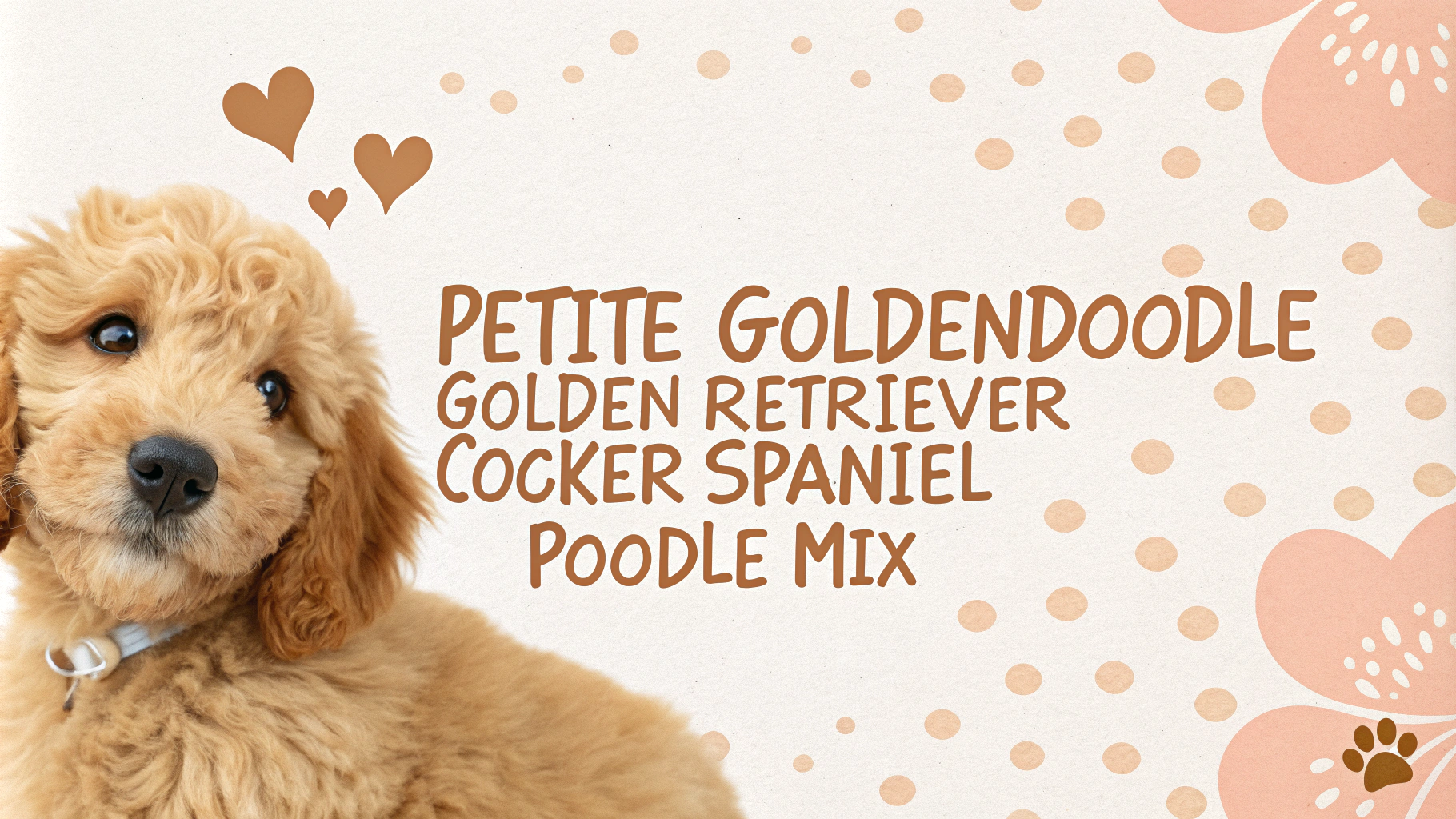The Malti-Pom is a designer dog breed that results from crossing a Maltese with a Pomeranian. This small, affectionate hybrid combines the best traits of both parent breeds, creating a charming and lovable companion. Malti-Poms are known for their fluffy coats, expressive eyes, and playful personalities, making them popular choices for apartment dwellers and families alike.
Key Facts
- Size: Small (6-10 inches tall, 3-7 pounds)
- Lifespan: 12-16 years
- Coat: Long, silky, and fluffy
- Colors: White, cream, black, brown, or combinations
- Temperament: Affectionate, playful, and alert
- Good with: Families, seniors, apartments
- Shedding: Low to moderate
- Exercise needs: Moderate
- Training: Responsive but can be stubborn
Character Traits
Malti-Poms inherit a blend of personality traits from their Maltese and Pomeranian parents, resulting in a charming and multifaceted temperament. These small dogs are known for their affectionate nature, often forming strong bonds with their owners and family members. They are typically playful and energetic, enjoying interactive games and activities that stimulate both their body and mind.
Despite their small size, Malti-Poms can be quite alert and make excellent watchdogs, often barking to announce the presence of strangers. This trait, combined with their loyalty, makes them protective of their loved ones. However, early socialization is crucial to prevent excessive barking or shy behavior around new people or situations.
Intelligent and generally eager to please, Malti-Poms can be responsive to training, although they may inherit a stubborn streak from their Pomeranian side. Positive reinforcement methods work best with this breed, as they respond well to praise and treats. Their adaptable nature allows them to thrive in various living situations, from apartments to larger homes, as long as they receive adequate attention and exercise.
History & Origins
The Malti-Pom is a relatively new designer dog breed, likely originating in the late 20th or early 21st century as part of the growing trend of creating hybrid dogs. While the exact origins of the Malti-Pom are not well-documented, understanding the history of its parent breeds provides insight into this mixed breed’s background.
The Maltese is an ancient breed with a history dating back over 2,000 years. Originating in the central Mediterranean area, likely on the island of Malta, these dogs were prized as companions by nobility and appeared in various works of art and literature throughout history. Pomeranians, on the other hand, descended from larger Spitz-type dogs and were popularized in the region of Pomerania, which is now part of modern-day Germany and Poland. They gained widespread popularity in the late 19th century, particularly after Queen Victoria of England became an enthusiast of the breed.
The creation of the Malti-Pom aimed to combine the gentle, affectionate nature of the Maltese with the spirited, alert personality of the Pomeranian. This mix also sought to blend the attractive physical characteristics of both breeds, resulting in a small, fluffy dog with a winning personality. As with many designer breeds, the goal was to create a companion animal that would appeal to dog lovers looking for a unique pet with specific traits.
Health Concerns
The Malti-Pom, like many small breed dogs, can be prone to certain health issues inherited from both parent breeds. Common concerns include:
- Dental problems: Due to their small mouths, they may experience overcrowding of teeth and dental disease.
- Patellar luxation: A condition where the kneecap dislocates, which is common in small breeds.
- Tracheal collapse: A weakening of the windpipe that can cause breathing difficulties.
- Eye issues: Including tear staining, dry eye, and progressive retinal atrophy.
- Hypoglycemia: Especially in puppies and very small adults.
Regular veterinary check-ups, dental care, and a healthy diet can help mitigate some of these risks. It’s also important to obtain your Malti-Pom from a reputable breeder who screens for genetic health issues in their breeding stock.
Exercise Needs
Malti-Poms are energetic little dogs that require moderate daily exercise to maintain their health and happiness. Despite their small size, they have a surprising amount of energy and enjoy active play. Their exercise needs typically include:
- Daily walks: 20-30 minutes of walking, split into two sessions if possible.
- Playtime: Interactive games like fetch or tug-of-war for 15-20 minutes, 2-3 times a day.
- Mental stimulation: Puzzle toys and training sessions to keep their minds active.
While they don’t need extensive exercise, regular activity helps prevent obesity and behavioral issues. Indoor play can suffice on days when outdoor activities aren’t possible, but they do enjoy exploring outside when weather permits. Always supervise outdoor activities as these small dogs can be vulnerable to larger animals.
Space Requirements
Malti-Poms are well-suited to various living situations due to their small size. They adapt well to:
- Apartments: Their compact size makes them excellent apartment dogs.
- Houses: They thrive in houses with or without yards.
- Urban or rural settings: Adaptable to different environments.
While they don’t require a large living space, Malti-Poms do need:
- A comfortable sleeping area
- Space for toys and play
- Access to a safe outdoor area for potty breaks and exploration
These dogs often enjoy having a designated area with a cozy bed or crate where they can retreat. Despite their small size, they benefit from having some space to move around and play indoors. Ensure any outdoor spaces are secure, as these tiny dogs can squeeze through small gaps.
Nutrition & Feeding
Proper nutrition is crucial for the health and longevity of Malti-Poms. As small dogs with high energy levels, they require a diet that meets their specific needs:
- High-quality small breed dog food: Look for formulas specifically designed for small or toy breeds.
- Appropriate calorie intake: Typically 40-55 calories per pound of body weight daily, adjusted for activity level and age.
- Meal frequency: 2-3 small meals per day to help prevent hypoglycemia.
- Avoid overfeeding: Malti-Poms can be prone to obesity, so monitor portion sizes carefully.
Fresh water should always be available. Treats should be given in moderation, not exceeding 10% of daily caloric intake. Some Malti-Poms may have sensitive stomachs or food allergies, so observe for any adverse reactions when introducing new foods. Always consult with a veterinarian for personalized nutritional advice, especially for puppies, seniors, or dogs with health issues.
Grooming Tips
The Malti-Pom requires regular grooming to maintain its fluffy, soft coat and overall health. Brush your Malti-Pom’s coat daily to prevent matting and tangles, using a pin brush or slicker brush. Pay special attention to areas prone to matting, such as behind the ears and under the legs. Bathe your Malti-Pom every 2-4 weeks, or as needed, using a mild dog shampoo. Trim the hair around the eyes, ears, and paw pads regularly to keep them clean and prevent irritation. Check and clean the ears weekly to prevent infections, and brush your dog’s teeth 2-3 times a week to maintain good oral hygiene. Trim nails every 2-3 weeks or as needed. Consider professional grooming every 6-8 weeks for a thorough coat trim and maintenance.
Training Approach
Malti-Poms are intelligent and eager to please, making them generally responsive to training. However, they can also be stubborn at times. Use positive reinforcement techniques such as treats, praise, and play to motivate your Malti-Pom during training sessions. Keep training sessions short (5-10 minutes) and fun to maintain their interest. Start with basic obedience commands like sit, stay, come, and down. Early socialization is crucial to prevent excessive barking and potential aggression towards strangers or other dogs. Address any signs of small dog syndrome by consistently enforcing rules and boundaries. Potty training may require patience, as small breeds can be challenging to house train. Consider crate training to aid in this process. Engage in mental stimulation activities like puzzle toys and obedience games to keep their minds sharp and prevent boredom-related behaviors.
